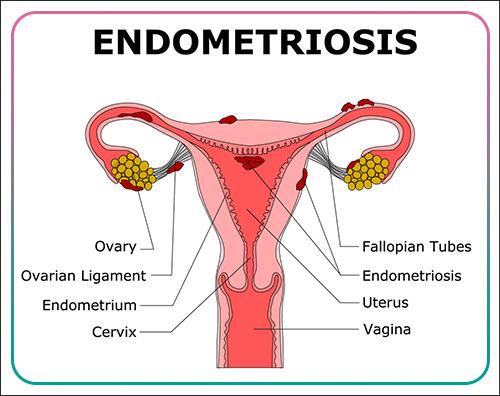Endometriosis is a chronic condition that affects millions of women worldwide. Despite its prevalence, it remains widely misunderstood. In this article, we'll delve into the intricacies of endometriosis, exploring its symptoms, causes, and available treatment options.
What is Endometriosis?
Endometriosis is a disorder where tissue similar to the lining inside the uterus, known as the endometrium, grows outside the uterus. This tissue can be found on the ovaries, fallopian tubes, outer surface of the uterus, and other organs within the pelvis. Unlike the lining of the uterus, which sheds during menstruation, the displaced endometrial tissue has no way to exit the body. This can lead to inflammation, scarring, and debilitating pain.
Symptoms of Endometriosis
The symptoms of endometriosis can vary widely among individuals, but common signs include:
-
Pelvic Pain: This is the most prevalent symptom of endometriosis, ranging from mild discomfort to severe pain that interferes with daily activities.
-
Menstrual Irregularities: Women with endometriosis may experience heavy periods, irregular menstrual cycles, or bleeding between periods.
-
Pain During Intercourse: Pain during or after sex is a common complaint among women with endometriosis.
-
Gastrointestinal Issues: Endometrial growths can cause digestive problems such as bloating, diarrhea, constipation, or nausea, especially during menstruation.
-
Infertility: Endometriosis is a leading cause of infertility in women. The exact link between endometriosis and infertility is complex and not fully understood.
Causes of Endometriosis
The exact cause of endometriosis remains unclear, but several theories have been proposed, including:
-
Retrograde Menstruation: This theory suggests that menstrual blood flows backward through the fallopian tubes into the pelvic cavity instead of leaving the body, allowing endometrial cells to implant and grow on pelvic organs.
-
Embryonic Cell Transformation: It's possible that hormones such as estrogen may transform embryonic cells into endometrial-like cell implants during puberty.
-
Surgical Scar Implantation: Endometrial cells may attach to surgical incision sites following procedures such as hysterectomy or C-section.
-
Immune System Disorders: Dysfunction of the immune system may prevent the body from recognizing and destroying endometrial-like tissue growing outside the uterus.
Treatment Options for Endometriosis
While there is no cure for endometriosis, several treatment options are available to manage symptoms and improve quality of life. These include:
-
Pain Medications: Over-the-counter pain relievers such as ibuprofen or prescription-strength medications can help alleviate pelvic pain and discomfort.
-
Hormone Therapy: Hormonal treatments such as birth control pills, hormone replacement therapy, or gonadotropin-releasing hormone (GnRH) agonists may help regulate hormonal fluctuations and reduce endometrial growth.
-
Surgery: In cases of severe endometriosis or infertility, surgical procedures such as laparoscopy or laparotomy may be recommended to remove endometrial implants, scar tissue, or cysts.
-
Fertility Treatments: Assisted reproductive technologies such as in vitro fertilization (IVF) may be necessary for women with endometriosis-related infertility.
Conclusion
Endometriosis is a complex and often debilitating condition that requires comprehensive management. By understanding the symptoms, causes, and available treatment options, women can take proactive steps to manage their condition and improve their quality of life. If you suspect you may have endometriosis, it's essential to consult with a healthcare provider for an accurate diagnosis and personalized treatment plan.
This article aims to provide comprehensive information on endometriosis in a readable format, addressing its symptoms, causes, and treatment options.


